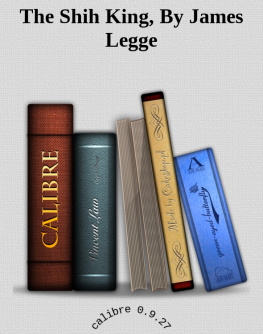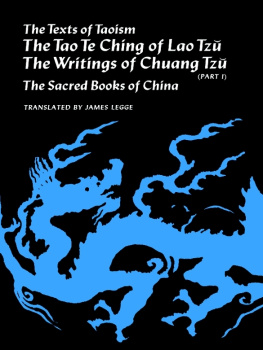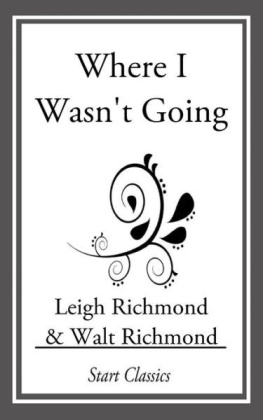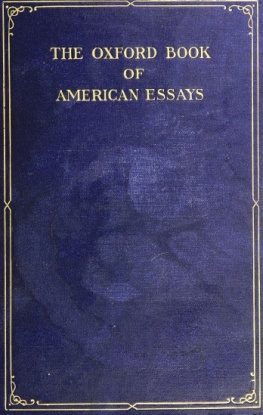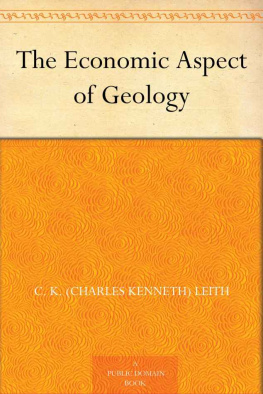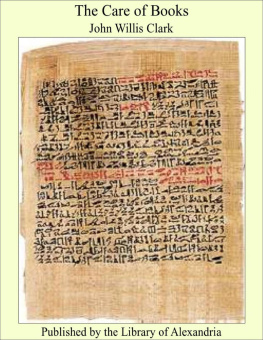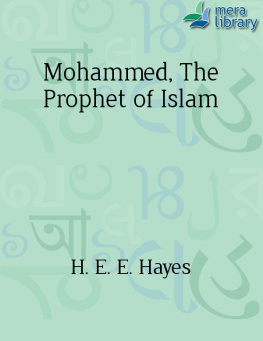James Legge - The Shih King
Here you can read online James Legge - The Shih King full text of the book (entire story) in english for free. Download pdf and epub, get meaning, cover and reviews about this ebook. genre: Art. Description of the work, (preface) as well as reviews are available. Best literature library LitArk.com created for fans of good reading and offers a wide selection of genres:
Romance novel
Science fiction
Adventure
Detective
Science
History
Home and family
Prose
Art
Politics
Computer
Non-fiction
Religion
Business
Children
Humor
Choose a favorite category and find really read worthwhile books. Enjoy immersion in the world of imagination, feel the emotions of the characters or learn something new for yourself, make an fascinating discovery.
- Book:The Shih King
- Author:
- Genre:
- Rating:3 / 5
- Favourites:Add to favourites
- Your mark:
- 60
- 1
- 2
- 3
- 4
- 5
The Shih King: summary, description and annotation
We offer to read an annotation, description, summary or preface (depends on what the author of the book "The Shih King" wrote himself). If you haven't found the necessary information about the book — write in the comments, we will try to find it.
The Shih King — read online for free the complete book (whole text) full work
Below is the text of the book, divided by pages. System saving the place of the last page read, allows you to conveniently read the book "The Shih King" online for free, without having to search again every time where you left off. Put a bookmark, and you can go to the page where you finished reading at any time.
Font size:
Interval:
Bookmark:
The Project Gutenberg EBook of The Shih King, by James Legge (#5 in our series by James Legge)
Copyright laws are changing all over the world. Be sure to check the copyright laws for your country before downloading or redistributing this or any other Project Gutenberg eBook.
This header should be the first thing seen when viewing this Project Gutenberg file. Please do not remove it. Do not change or edit the header without written permission.
Please read the legal small print, and other information about the eBook and Project Gutenberg at the bottom of this file. Included is important information about your specific rights and restrictions in how the file may be used. You can also find out about how to make a donation to Project Gutenberg, and how to get involved.
**Welcome To The World of Free Plain Vanilla Electronic Texts**
**eBooks Readable By Both Humans and By Computers, Since 1971**
*****These eBooks Were Prepared By Thousands of Volunteers!*****
Title: The Shih King
Author: James Legge
Release Date: November, 2005 [EBook #9394] [This file was first posted on September 29, 2003]
Edition: 10
Language: English
Character set encoding: ISO8859-1
*** START OF THE PROJECT GUTENBERG EBOOK, THE SHIH KING ***
THE SHIH KING
OR
ALL THE PIECES AND STANZAS IN IT ILLUSTRATING THE RELIGIOUS VIEWS AND PRACTICES OF THE WRITERS AND THEIR TIMES.
Translated by
James Legge
From the Sacred Books of the East, Vol. 3
First Published 1879
Scanned at www.sacred-texts.com August-September 2000
THE SHIH KING
OR
BOOK OF POETRY.
INTRODUCTION.
CHAPTER I.
THE NAME AND CONTENTS OF THE CLASSIC.
1. Among the Chinese classical books next after the Sh in point of antiquity comes the Shih or Book of Poetry.
The meaning of the character Shih.
The character Sh, as formed by the combination of two others, one of which signified a pencil, and the other to speak, supplied, we saw in its structure, an indication of its primary significance, and furnished a clue to its different applications. The character Shih was made on a different principle, that of phonetical formation, in the peculiar sense of these words when applied to a large class of Chinese terms. The significative portion of it is the character for speech, but the other half is merely phonetical, enabling us to approximate to its pronunciation or name. The meaning of the compound has to be learned from its usage. Its most common significations are poetry, a poem, or poems, and a collection of poems! This last is its meaning when we speak of the Shih or the Shih King.
The earliest Chinese utterance that we have on the subject of poetry is that in the Sh by the ancient Shun, when he said to his Minister of Music, Poetry is the Expression of earnest thought, and singing, is the prolonged utterance of that expression. To the same effect is the language of a Preface to the Shih, sometimes ascribed to Confucius and certainly older than our Christian era: Poetry is the product of earnest thought. Thought cherished in the mind becomes earnest; then expressed in words, it becomes poetry. The feelings move inwardly, and are embodied in words. When words are insufficient for them, recourse is had to sighs and exclamations. When sighs and exclamations are insufficient for them, recourse is had to the prolonged utterance of song. When this again is insufficient, unconsciously the hands begin to move and the feet to dance.. To set forth correctly the successes and failures (of government), to affect Heaven and Earth, and to move spiritual beings, there is no readier instrument than poetry.
Rhyme, it may be added here, is a necessary accompaniment of poetry in the estimation of the Chinese. Only in a very few pieces of the Shih is it neglected.
The contents of the Shih.
2. The Shih King contains 305 Pieces and the titles of six others. The most recent of them are assigned to the reign of king Ting of the Ku dynasty, B.C. 606 to 586, and the oldest, forming a group of only five, to the period of the Shang dynasty which preceded that of Ku, B.C. 1766 to 1123. Of those five, the latest piece should be referred to the twelfth century B.C., and the most ancient may have been composed five centuries earlier. All the other pieces in the Shih have to be distributed over the time between Ting and king Wan, the founder of the line of Ku. The distribution, however, is not equal nor continuous. There were some reigns of which we do not have a single Poetical fragment.
The whole collection is divided into four parts, called the Kwo Fang, the Hsio Y, the T Y, and the Sung.
The Kwo Fang, in fifteen Books, contains 160 pieces, nearly all of them short, and descriptive of manners and events in several of the feudal states of Ku. The title has been translated by The Manners of the Different States, Les Murs des Royaumes, and, which I prefer, by Lessons from the States.
The Hsio Y, or Lesser Y, in eight Books, contains seventy-four pieces and the titles of six others, sung at gatherings of the feudal princes, and their appearances at the royal court. They were produced in the royal territory, and are descriptive of the manners and ways of the government in successive reigns. It is difficult to find an English word that shall fitly represent the Chinese Y as here used. In his Latin translation of the Shih, p. Lacharme translated Hsio Y by Quod rectum est, sed inferiore ordine, adding in a note:Sio Y, latine Parvum Rectum, quia in hac Parte mores describuntur, recti illi quidem, qui tamen nonnihil a recto deflectunt. But the manners described are not less correct or incorrect, as the case may be, than those of the states in the former Part or of the kingdom in the next. I prefer to call this Part Minor Odes of the Kingdom, without attempting to translate the term Y.
The T Y or Greater Y, in three Books, contains thirty-one pieces, sung on great occasions at the royal court and in the presence of the king. p. Lacharme called it Magnum Rectum (Quod rectum est superiore ordine). But there is the same objection here to the use of the word correct as in the case of the pieces of the previous Part. I use the name Major Odes of the Kingdom. The greater length and dignity of most of the pieces justify the distinction of the two Parts into Minor and Major.
The Sung, also in three Books, contains forty pieces, thirty-one of which belong to the sacrificial services at the royal court of Ku; four, to those of the marquises of L; and five to the corresponding sacrifices of the kings of Shang. p. Lacharme denominated them correctly Parentales Cantus. In the Preface to the Shih, to which I have made reference above, it is said, The Sung are pieces in admiration of the embodied manifestation of complete virtue, announcing to the spiritual Intelligences their achievement thereof. K Hss account of the Sung wasSongs for the Music of the Ancestral Temple; and that of Kiang Yung of the present dynastySongs for the Music at Sacrifices. I have united these two definitions, and call the PartOdes of the Temple and the Altar. There is a difference between the pieces of L and the other two collections in this Part, to which I will call attention in giving the translation of them.
Only the pieces of the fourth Part have professedly a religious character.
From the above account of the contents of the Shih, it will be seen that only the pieces in the last of its four Parts are professedly of a religious character. Many of those, however, in the other Parts, especially the second and third, describe religious services, and give expression to religious ideas in the minds of their authors.
Classification of the pieces from their form and style.
3. Some of the pieces in the Shih are ballads, some are songs, some are hymns, and of others the nature can hardly be indicated by any English denomination They have often been spoken of by the general name of odes, understanding by that term lyric poems that were set to music.
Next pageFont size:
Interval:
Bookmark:
Similar books «The Shih King»
Look at similar books to The Shih King. We have selected literature similar in name and meaning in the hope of providing readers with more options to find new, interesting, not yet read works.
Discussion, reviews of the book The Shih King and just readers' own opinions. Leave your comments, write what you think about the work, its meaning or the main characters. Specify what exactly you liked and what you didn't like, and why you think so.

